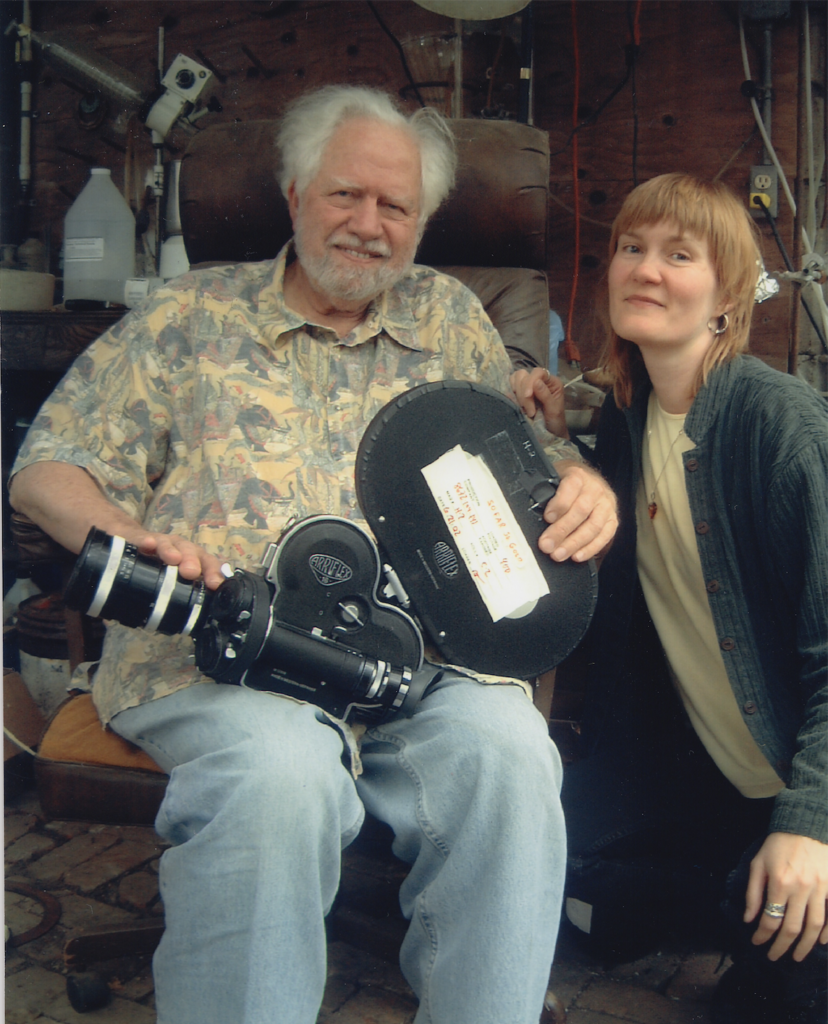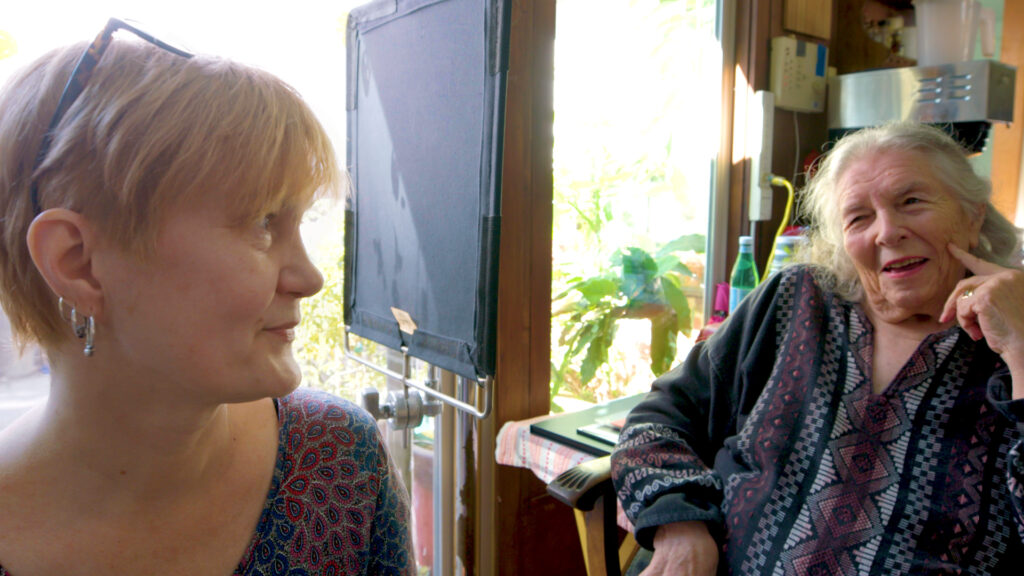- Better Living Through Chemistry - March 3, 2021

My brand new, almost-finished documentary is called “Better Living Through Chemistry.” It’s about psychedelic pioneers Ann and Sasha Shulgin.
The phrase “Better Living Through Chemistry” is a variant of a DuPont advertising slogan, “Better Things for Better Living…Through Chemistry.” DuPont adopted it in 1935 and it was their slogan until 1982 when the “Through Chemistry” part was dropped. The counterculture embraced the term, and it became associated with psychedelic drug use in the 1960s. More importantly, it describes the subjects of my film.

If it weren’t for the hypocrisy of drug prohibition, everyone would know these names: Alexander T. “Sasha” Shulgin (1925-2014) was a chemist who researched and published on nearly 200 psychedelic substances, including MDMA. His wife and co-author, Ann Shulgin (b. 1931), is a lay therapist and a pioneer in the field of psychedelic psychotherapy. Ann still lives in the house where Sasha grew up, in California. Their house and Sasha’s lab are set on a few acres known as “the Shulgin farm.”
Ann and Sasha personify better living. Among their other achievements, they’ve made an immense contribution to the psychedelic community by hosting garden parties at the farm, a couple of times a year. We filmed at two different Fourth of July parties, which brings together all the elements of the Shulgins’ world in a very visual way.
I was introduced to Ann and Sasha by Myron and Jean Stolaroff, our mutual friends. Myron was one of the psychedelic researchers that I interviewed in my film “Hofmann’s Potion,” which came out in 2002. I asked Myron what film I should make next, and he said, “I want you to meet my friends, the Shulgin’s.” I liked the idea right away since Ann and Sasha were clearly “living legends.”

Join us at Sacred Plants in the Americas II
Because Myron introduced us, and because they had seen “Hofmann’s Potion,” Ann and Sasha were open to working with me. I made a few trips to California for the filming. We filmed at the Mind States conference in Berkeley, in 2003, and at Albert Hofmann’s centenary in Basel, in 2006. Filmmaking is a very expensive endeavour, and unfortunately, I couldn’t find support to keep working on the film. After Basel, I reluctantly put the project aside and moved on to other things.
Time moved on, too. Myron passed away in 2013, and Sasha in 2014.
Another idea I developed became “The Sunshine Makers,” a film about underground chemists Nick Sand and Tim Scully. It played at the “Psychedelic Science” conference in Oakland, California, in the spring of 2017.
While at the event in Oakland, on the Saturday, I ran into Ann Shulgin and her daughter Wendy Perry Tucker. It was wonderful to see them after all that time! Ann invited me to a gathering that was being held at the farm on the coming Tuesday.
One of The Sunshine Makers main subjects, Nicholas Sand, came to the screening in Oakland that evening. Many of Nick’s long-time friends and supporters were there. They gave Nick a standing ovation and afterwards there was a line-up for autographs and selfies… Nick was in his glory! It had taken a long time to bring that film to an audience, and it was a grand celebration.
A day later, at home in Marin county, Nick died.
I found out on the Tuesday; I got a call while driving to the Shulgin farm. He had been such a big part of my life for so long, news of his death came as a tremendous shock. He had been ill at the screening, but Nick seemed to have superhuman powers, and I assumed he’d bounce back.

Discover Indigenous Reciprocity Iniciative of the Americas
Almost everyone at the gathering knew Nick, and what was supposed to have been a party became a solemn affair. I recall that at one point that afternoon, Ann was sitting in her kitchen; I was standing beside her chair. She tugged on my sleeve to indicate that she wanted to whisper in my ear. I leaned in close and Ann said: “The time has come for you to finish your Shulgin film.”
I’ve been working on it ever since.
We filmed our primary interview with Ann over three days, chatting for a couple of hours each day. When you have that much time together, you can relax into the stories. It was a tremendous honour and also a ton of fun!
In the film, Mariavittoria Mangini talks about “the betterment of well people.” Everybody wants sick people to have access to the best possible medicine, no question. However, that is not the limit of the utility of these materials.
“People have been using visionary plants for millennia. Not only for medical reasons, but also to improve the ordinary aspects of everyday life: to enjoy food, sex, and music more; to get more pleasure out of life—but also to recognize our better instincts, to be happier, healthier, more creative and empathetic people, connected to the community in meaningful ways… like Ann and Sasha.”
People have been using visionary plants for millennia. Not only for medical reasons, but also to improve the ordinary aspects of everyday life: to enjoy food, sex, and music more; to get more pleasure out of life—but also to recognize our better instincts, to be happier, healthier, more creative and empathetic people, connected to the community in meaningful ways… like Ann and Sasha.

If I had managed to finish the film when originally planned, it would tell a very different tale. For one thing, Sasha’s gone, so it’s Ann’s story now. As well, the scope of the story has changed. In 2002, psychedelic research was a “niche” topic. Now, it’s not even controversial; it’s mainstream. That huge cultural shift happened quite quickly – to a large degree, because of Ann and Sasha’s work.
The Shulgins didn’t ask me to approach the story in any particular way, and Ann has never asked me to make any changes. If you’ve read Shulgins’ books, PIHKAL and TIHKAL, you’ll know that she can be very candid (to put it mildly) and insightful, which makes my job easy. I hope this film does Ann justice because she is beautiful, funny, and wise, and she very much deserves recognition for her immense contributions to the field.
We’re in the final stages of post-production now. Over the next few months, we’ll be navigating the film festival circuit and figuring out how best to bring “Better Living Through Chemistry” to an audience.
I showed the film to Ann before beginning the final touches. Even though she hadn’t asked, I still wanted to know that she approved before I finalized the documentary. All she said was: “It’s a beautiful film and you’ve done a wonderful job.”
Art by Marialba Quesada.
Take a minute to browse our stock:
Did you enjoy reading this article?
Please support Chacruna's work by donating to us. We are an independent organization and we offer free education and advocacy for psychedelic plant medicines. We are a team of dedicated volunteers!
Can you help Chacruna advance cultural understanding around these substances?
















